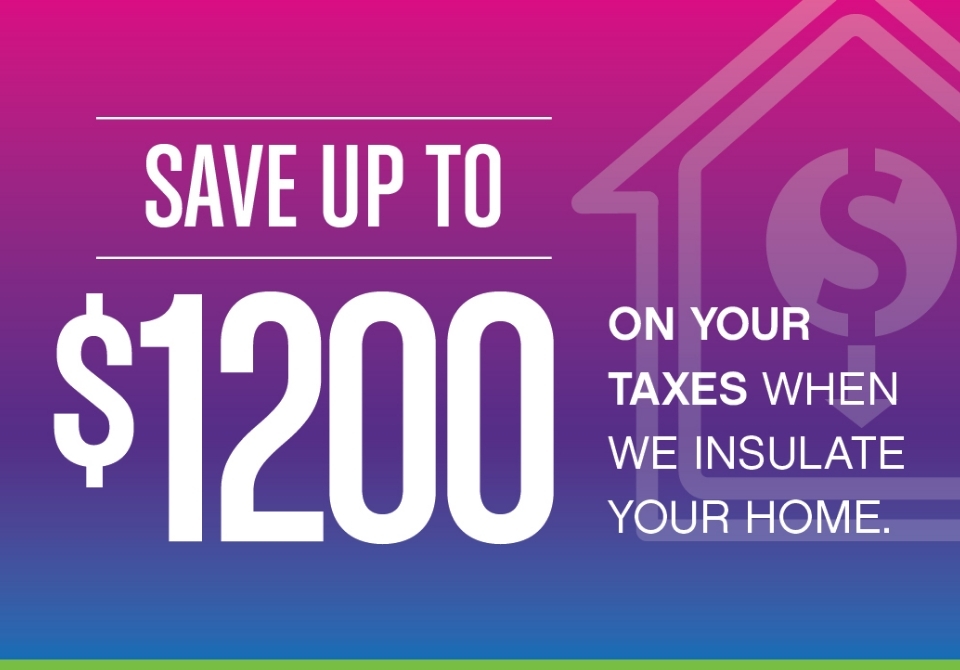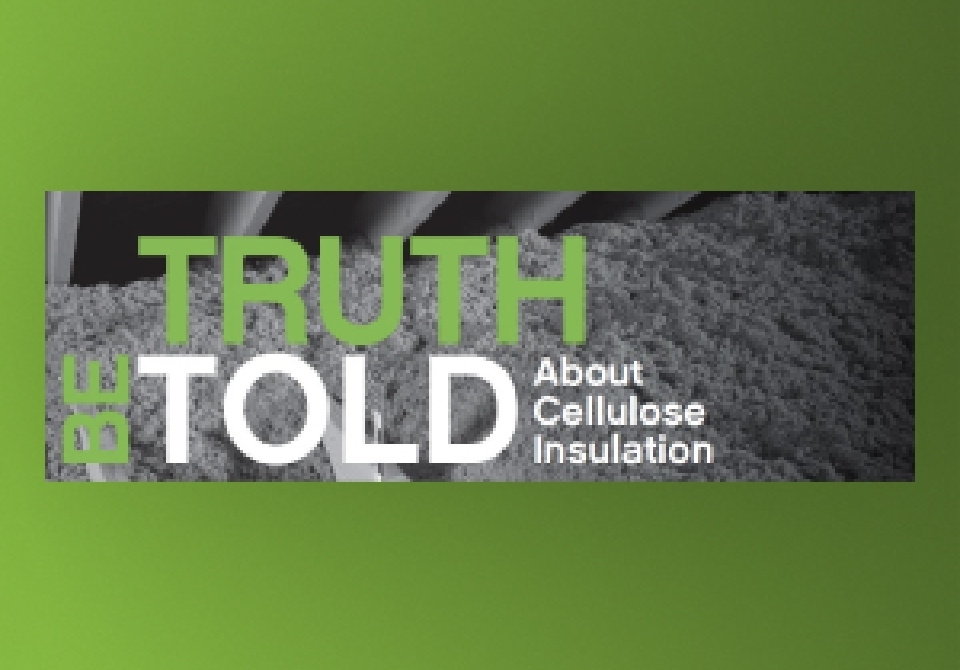
Understanding Insulation Tax Incentives: A Homeowner’s Guide
With residential properties responsible for nearly 20% of greenhouse gas emissions, installing earth-friendly insulation is one of the best ways to reduce the carbon footprint of your home — and save money on your monthly energy bills in the process. Whether you’re building from the ground up or retrofitting in the near future, cellulose insulation, made from recycled paper, is a powerful ally in the pursuit of both.
Here’s how it works.
Your HVAC system and your home insulation work in tandem to maintain the ideal temperature in your home. The HVAC system circulates cool or warm air around the area, bringing the air temperature to a desired level. When the home is well insulated, HVAC systems don’t have to work as hard because of insulation’s ability to retain that cool or warm air where it belongs. Cellulose insulation has a high density, meaning it minimizes airflow to provide effective insulation. As a result, homes and buildings will need less electricity for heating in the winter and for air conditioning in the summer.
Several energy-efficient home upgrades qualify for energy-efficiency tax incentives. SANCTUARY® by Greenfiber, an Energy Star®–certified insulation, is one such upgrade.
Using tax credits, along with any available rebates, is a smart way to help make the transition to a clean energy future more affordable. Read our guide to find out which insulation tax incentives are available to you, to determine if you qualify and to learn tips for claiming.
The Inflation Reduction Act: Insulation Tax Credit
The Inflation Reduction Act of 2022, part of the United States’ goal to reach net zero by 2050, provides nearly $369 billion for renewable energy equipment and energy-efficient home improvements. This is a powerful strategy, as using low-carbon building materials can significantly cut emissions while preserving a building’s performance. For homeowners who convert their homes to save energy, including installing insulation, the law offers a variety of cost-saving tax incentives.
What types of insulation qualify?
Loose-fill and blow-in insulation such as cellulose insulation — best suited for attic floors, enclosed existing walls, open new wall cavities and other hard-to-reach places — are among the different types of insulation that qualify for a tax credit. Others include:
- • Fiberglass
- • Mineral wool
- • Natural fibers
- • Plastic fibers
- • Polyisocyanurate
- • Polystyrene
- • Polyurethane
But not all insulation materials perform the same — and the type you choose can make a critical impact on the environment.

SANCTUARY is the only major insulation product that is proven to reduce global warming potential because it’s made from living trees that can lock in carbon for the life of your home. Take a look at this carbon comparison study to see how cellulose comes out on top.
What insulation incentives are included in the Inflation Reduction Act?
Some tax credits are extensions of ones that already exist, while others are new and will require implementation. If you’re considering installing SANCTUARY as a future home energy upgrade, here are the tax credits and rebates that will be available.
Energy Efficient Home Improvement Tax Credit (25C)
Prior to the Inflation Reduction Act, homeowners were eligible for this home improvement tax credit, equal to 10% of the cost of insulation materials with a lifetime cap of $500 per taxpayer. Beginning in 2023, the Inflation Reduction Act increased the tax credit to 30% of the cost of insulation and air sealing, up to $1,200 annually. Visit Energy Star for additional eligibility requirements.
How to Claim the Energy Efficient Home Improvement Tax Credit
If you haven’t claimed your home insulation tax credit, you could be missing out on significant savings. Not sure where to start? Check out these three tips to help the process run smoothly.
- Get products from a qualified manufacturer: Typical bulk insulation products, such as blown-in cellulose, batts, rolls, rigid boards, expanding spray and pour-in-place, can qualify for the Energy Efficient Home Improvement Tax Credit. Greenfiber insulation comes with a Manufacturer’s Certification Statement, which certifies that SANCTUARY qualifies for the insulation tax credit. Taxpayers must keep a copy of the certification statement for their records but do not have to submit a copy with their tax return. Note that while there are product identification number reporting requirements for certain 25C-eligible products beginning in 2025, these requirements do not apply to insulation materials.
- Keep a record of product identification numbers, receipts and invoices: You must submit your tax return with the product identification number in order to qualify for tax incentives. Keep documentation of your purchases, including materials, in case there is an audit.
- Fill out the necessary tax form: File Form 5695, “Residential Energy Credits,” with your tax return to claim the energy-efficiency home improvement credit. The applicable form for the year will be available through the IRS.
What types of residences qualify for an insulation tax credit?
The insulation tax credit is available only for principal residences in the United States and does not apply to new constructions or rentals. A principal residence is the home where you live most of the time. This includes:
- • Houses
- • Houseboats
- • Mobile homes
- • Condominiums
- • Cooperative apartments
- • Manufactured homes
High-Efficiency Electric Home Rebate Program
The High-Efficiency Electric Home Rebate Program is a new 10-year rebate program available for low- to moderate-income households as part of the Inflation Reduction Act. The rebate will become active in 2024 and will be available through point of sale, meaning you’ll be able to receive the discount upon purchasing the qualifying product.
Today, HEEHRA is projected to enhance air quality and provide unparalleled employment development over the course of the next 10 years. This includes 462,430 installation jobs, 80,000 manufacturing jobs, and 800,000 indirect and induced jobs. ;
The program covers:
- • 100% of the costs of electrification projects (up to $14,000) for low-income households
- • 50% of the costs of electrification projects (up to $14,000) for moderate-income households
Rebates under the program also cover both the purchase and installation costs of each electrification upgrade, set according to Department of Energy rules on a state-by-state basis.
HEEHRA Rebate Levels
Income eligibility and percent of covered costs
- • Low-income households: 100% of the cost of insulation up to $1,600 (including installation) for households with annual incomes less than 80% of the area’s median income
- • Moderate-income households: 50% of the cost of insulation up to $1,600 (including installation) for households with annual incomes of 80%–150% of the area’s median income.
Overall incentives
- • Max consumer rebate: $14,000
- • Max contractor rebate: $500
Rebates for qualified electrification projects
- • Heat pump HVAC: $8,000
- • Heat pump water heater: $1,750
- • Electric stove/cooktop: $840
- • Heat pump clothes dryer: $840
- • Breaker box: $4,000
- • Electric wiring: $2,500
- • Weatherization (insulation, air sealing, ventilation): $1,600
These rebates can be combined for multiple projects, but you cannot receive more than $14,000 total in electrification rebates. Learn whether you qualify for these or any other rebates in your area on the Database of State Incentives for Renewables & Efficiency® website.
Frequently Asked Questions
Can you write off insulation on your taxes?
Yes. Writing off insulation on your end-of-year taxes is feasible. This comes as a result of the Inflation Reduction Act of 2022, in which home energy tax credits of up to $1,200 are now being offered by the IRS for insulation upgrades.
Do the tax credits apply to DIY insulation projects or only professional installation?
The tax credits apply to both. As long as your insulation meets the requirements, you may install the insulation yourself and still qualify for tax incentives. However, note that labor is not an eligible expense for building envelope upgrades under the 25C tax credit. For non-envelope upgrades (heat pumps, water heaters, central AC and more), labor is an eligible expense.
Greenfiber Trusted Installers have been professionally trained to install SANCTUARY correctly and efficiently. If you prefer to leave your insulation project to the pros, fill out the contact form and a Greenfiber representative will get in touch to help you find the best installer for the job.
Can tax credits be applied retroactively for insulation I installed in previous years?
If you did not claim a qualifying tax credit in a prior year, you may be able to file an amended tax return for the year in which you made the improvement. However, you won’t be able to deduct it from your most recent tax return. The credit for improvements completed in 2022, for instance, cannot be claimed on your 2023 taxes.
Can I claim credits for multiple insulation projects in one year?
Yes. You may take advantage of multiple rebates for an eligible entry. However, only the DOE’s electrification rebate program and the 25C tax credit may be used in tandem. Electric home rebates cannot be combined with any other federal grant or rebate for the same single upgrade.
Ready to harness the benefits of upgrading your home with cellulose insulation? SANCTUARY Trusted Installers have been trained and have the expertise to ensure your installation project is completed without a hitch. Use our installer locator to find one near you today.
